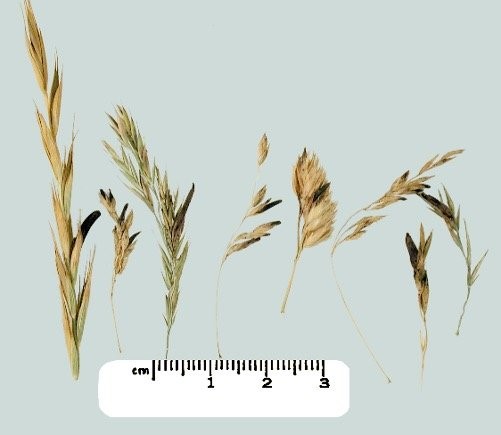
The prevention and management of fescue toxicosis and exposure to other sources of ergot alkaloids, such as ergotized grasses and small grains, continue to be ongoing challenges to bovine practitioners and cattle producers in certain parts of the U.S in 2020. Let’s briefly review ergot alkaloid intoxication and provide updates on animal and forage management approaches, which can be utilized to minimize production losses associated with endophyte-infected tall fescue and grasses and/or grains infected with ergot.
What is Fescue Toxicosis?
| • | Associated with endophytic ergot (ergopeptine) alkaloids in tall fescue grass. |
| • | The endophytic fungus (Epichloë coenophiala) is not visible to the naked eye. |
| • | There is a symbiosis between the endophyte and tall fescue (Lolium arundinaceum). |
| • | Ergot alkaloids (specifically ergovaline) cause hypoprolactinemia and vasoconstriction. |
| • | Dry gangrene (fescue foot) is observed in winter (cold temperatures). |
| • | Summer slump is observed during the summer (hot temperatures). |
| • | Genomic, epigenomic, and microbiomic effects. |
What is Ergotism?
| • | Associated with fungal ergot (ergopeptine) alkaloids produced by Claviceps purpurea. |
| • | Claviceps purpurea infects the seed heads of many grasses and small grains (NOT corn). |
| • | Claviceps infection occurs most frequently following cool, wet springs. |
| • | The ergot bodies (sclerotia) of Claviceps species are visible to the naked eye. |
| • | Ergot sclerotia can contain high concentrations of ergot (ergopeptine) alkaloids. |
| • | These ergot (ergopeptine) alkaloids cause hypoprolactinemia and vasoconstriction. |
| • | The signs of ergotism can be indistinguishable from those of fescue toxicosis. |
| • | However, ergotism is less dependent on ambient temperature and can be fatal. |
Forage Management Strategies for Fescue Toxicosis:
| • | Fescue toxicosis is likely a reality in the beef industry for the foreseeable future. |
| • | Toxic endophyte-infected tall fescue is not ALL BAD and can be managed. |
| • | Several agronomic practices can eliminate/reduce the effects of tall fescue toxicosis. |
| • | Testing tall fescue pastures can provide important information. |
| • | Renovation of toxic endophyte-infected tall fescue can eliminate the problem. |
| • | Over-seeding tall fescue fields with clovers can dilute the effects of endophytic toxins. |
| • | Avoidance of high nitrogen fertilization rates reduces the severity of fescue toxicosis. |
| • | Removal (mowing) of seed heads can reduce ergovaline content. |
| • | The forage ergovaline concentration can also be reduced by drying (production of hay). |
| • | Ammoniation of hay has also been shown to reduce forage ergovaline content. |
Forage Management Strategies for Ergotism:
| • | Observation/testing of pastures for ergot can provide important information. |
| • | Removal (mowing) of seed heads can reduce the number of aerial ergot bodies. |
| • | Mature ergot bodies can be physically removed during the production of hay. |
Animal Management Strategies for Fescue Toxicosis and Ergotism:
| • | Most management strategies focus on the management of summer slump. |
| • | Feeding supplements has been reported to be helpful in minimizing clinical effects. |
| • | Rotation of cattle to warm-season forages in summer and stockpiled tall fescue grass in the fall has been proven to be a helpful management strategy for fescue toxicosis. |
| • | Recent research shows that animal tolerance to fescue toxicosis is possible. |
| • | Using tolerant livestock where exposure to toxic endophyte-infected tall fescue is unavoidable might give innovative producers a competitive edge. |
The Toxicology Section at the MU VMDL routinely tests for ergot alkaloids ($90) and ergot/fescue alkaloids ($110) in feedstuffs. Please contact Tim Evans, DVM, MS, PhD, DABVT, DACT (Toxicology), with any questions about testing or results.

